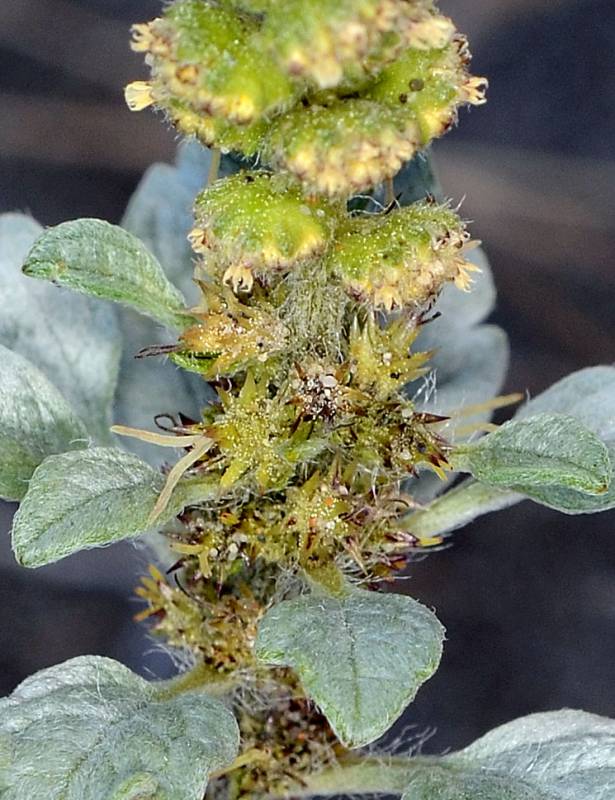Ambrosia chamissonis
Ambrosia psilostachya
silver beachweed, beach bur, cutleaf beach bur, silver bur-ragweed
perennial ragweed, western ragweed
Leaves mostly alternate, petiolate, the toothed to pinnately dissected blade 2-7 cm. long and 8-40 mm. wide.
Leaves opposite below and alternate above, usually pinnatifid, lance-ovate or elliptic in outline, 3-10 cm. long, sub-sessile.
Staminate heads sub-sessile, forming congested, leafless, terminal spikes; pistillate heads borne below, in the axils of bracts; fruiting involucre a bur, 6-11 mm. long, with 2-4 series of flattened prickles.
Staminate heads small, numerous, short-pedunculate, in an open inflorescence of several spike-like flowering shoots arising from the upper leaf axils; pistillate heads borne below, in the leaf axils; fruiting involucre a short-beaked bur, 3-5 mm. long, with a few rounded projections.
Achene
Achene
Ambrosia chamissonis
Ambrosia psilostachya
- Local floras:
BC,
CA,
OR,
WA
- Local Web sites:
CalFlora,
CalPhotos,
Flora NW,
PNW Herbaria,
Turner Photog.
WildflowerSearch
iNaturalist (observations)
USDA Plants Database
- LBJ Wildflower Center
- SEINet
- Plants of the World Online
- Encyclopedia of Life
- Wikipedia
- Google Image Search
- Local floras:
BC,
CA,
OR,
WA
- Local Web sites:
CalFlora,
CalPhotos,
Flora NW,
PNW Herbaria
WildflowerSearch
iNaturalist (observations)
USDA Plants Database
- LBJ Wildflower Center
- SEINet
- Plants of the World Online
- Encyclopedia of Life
- Wikipedia
- Google Image Search



